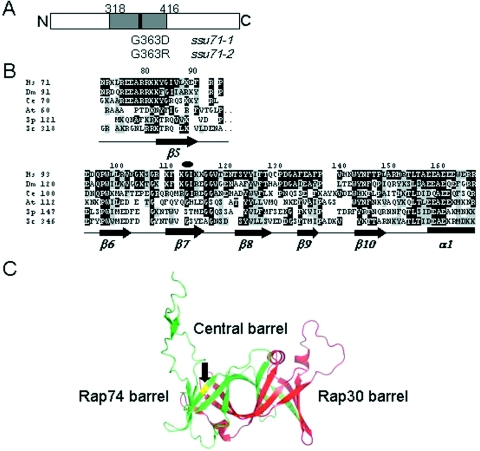Figure 1.
Depiction of the ssu71 suppressor mutations. (A) The ssu71-1 and ssu71-2 alleles encode G363D and G363R replacements, respectively. The gray box denotes the conserved sequence (residues 318–416) shown in B. (B) Sequence alignment of the conserved region of the Tfg1/RAP74 subunit of TFIIF. Hs, human; Dm, Drososphila melanogaster; Ce, Caenorhabditis elegans; At, Arabidopsis thaliana; Sp, S.pombe; and Sc, S.cerevisiae. Secondary structures from the human RAP74 protein are indicated below the sequences. The conserved G363 residue of Tfg1 lies within the β7-sheet and is denoted by the black oval. Black shading indicates identity with the human sequence; gray shading denotes similarity. This sequence was reproduced from Figure 1 of Funk et al. (33), with permission. (C) RAP74 G112 (Tfg1 G363) lies within the triple barrel structure of the RAP74–RAP30 interaction domain. RAP30 (residues 2–219) is depicted in red; RAP74 (residues 2–172) in green; residue G112 is highlighted in yellow and marked by the black arrow. This structure was created using PyMol based on the X-ray structure of human RAP74/RAP30 (34).

